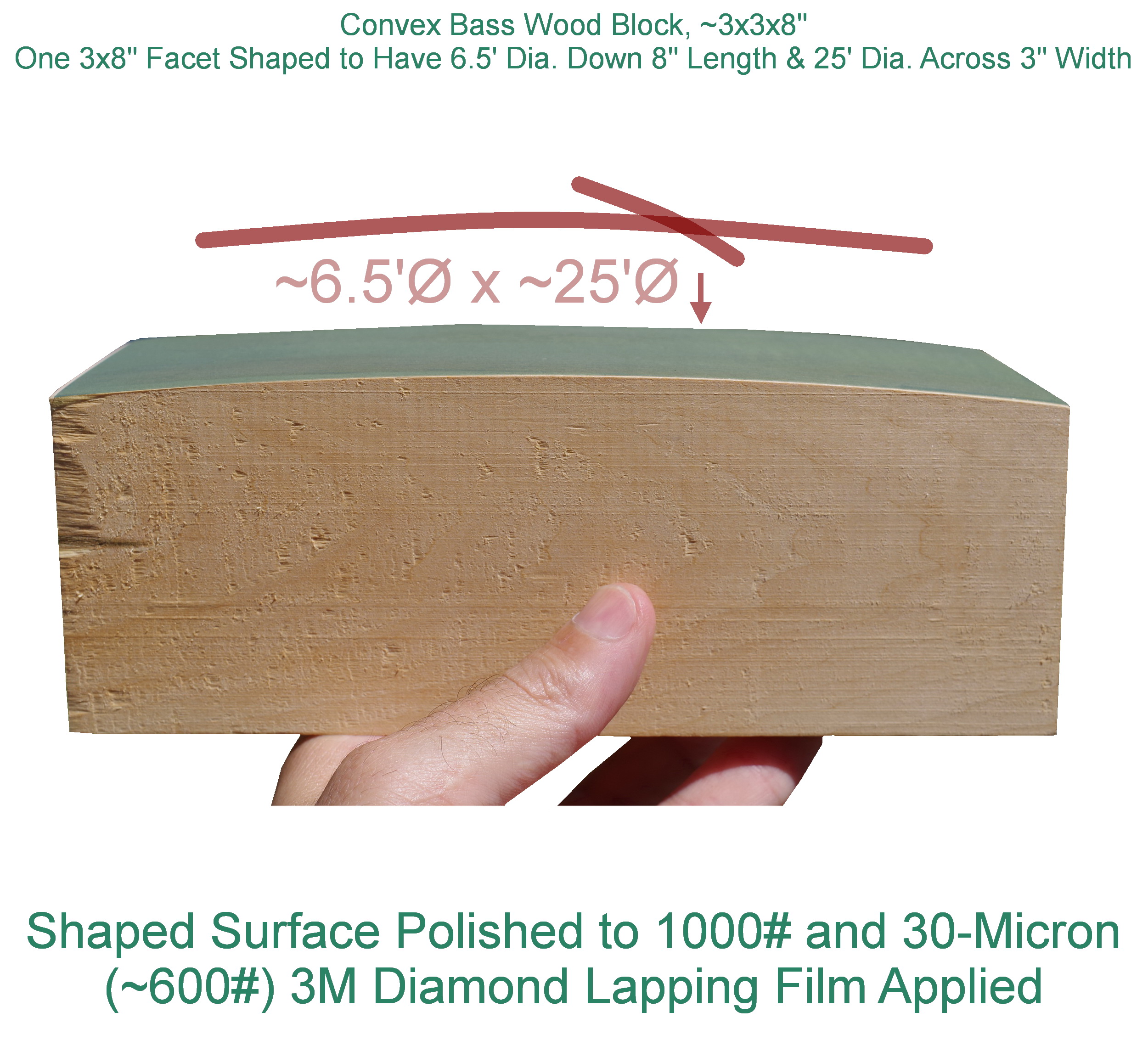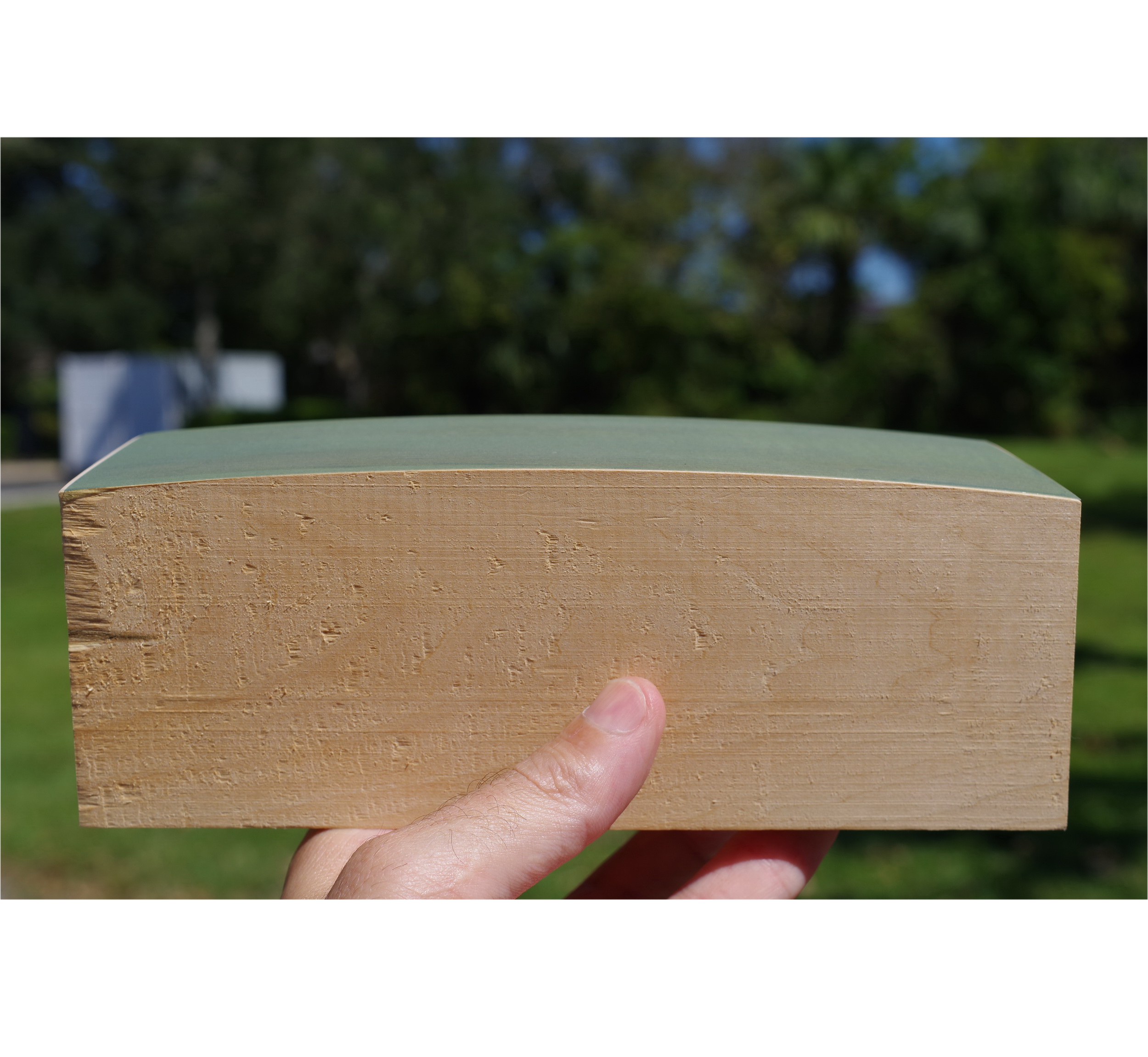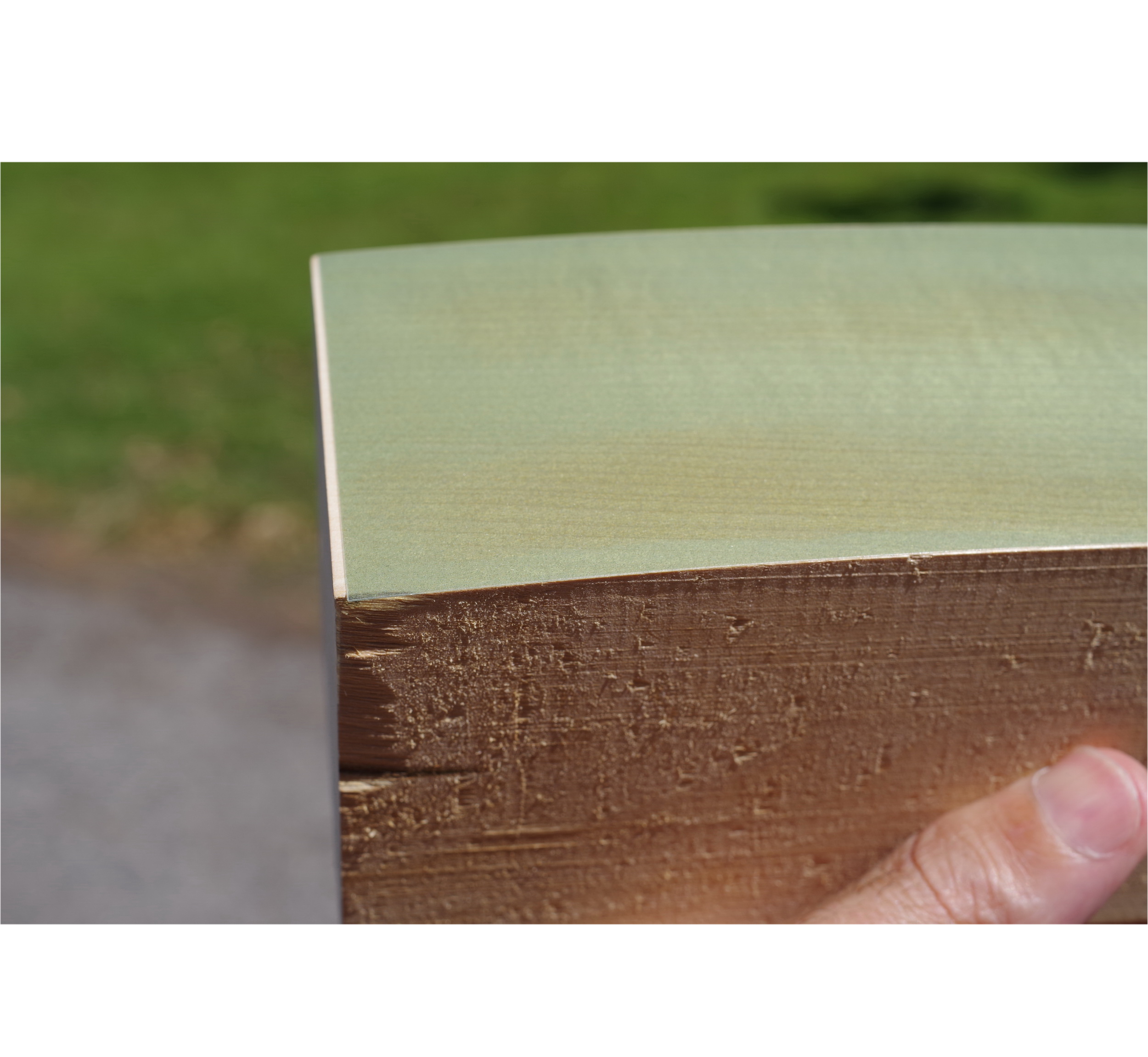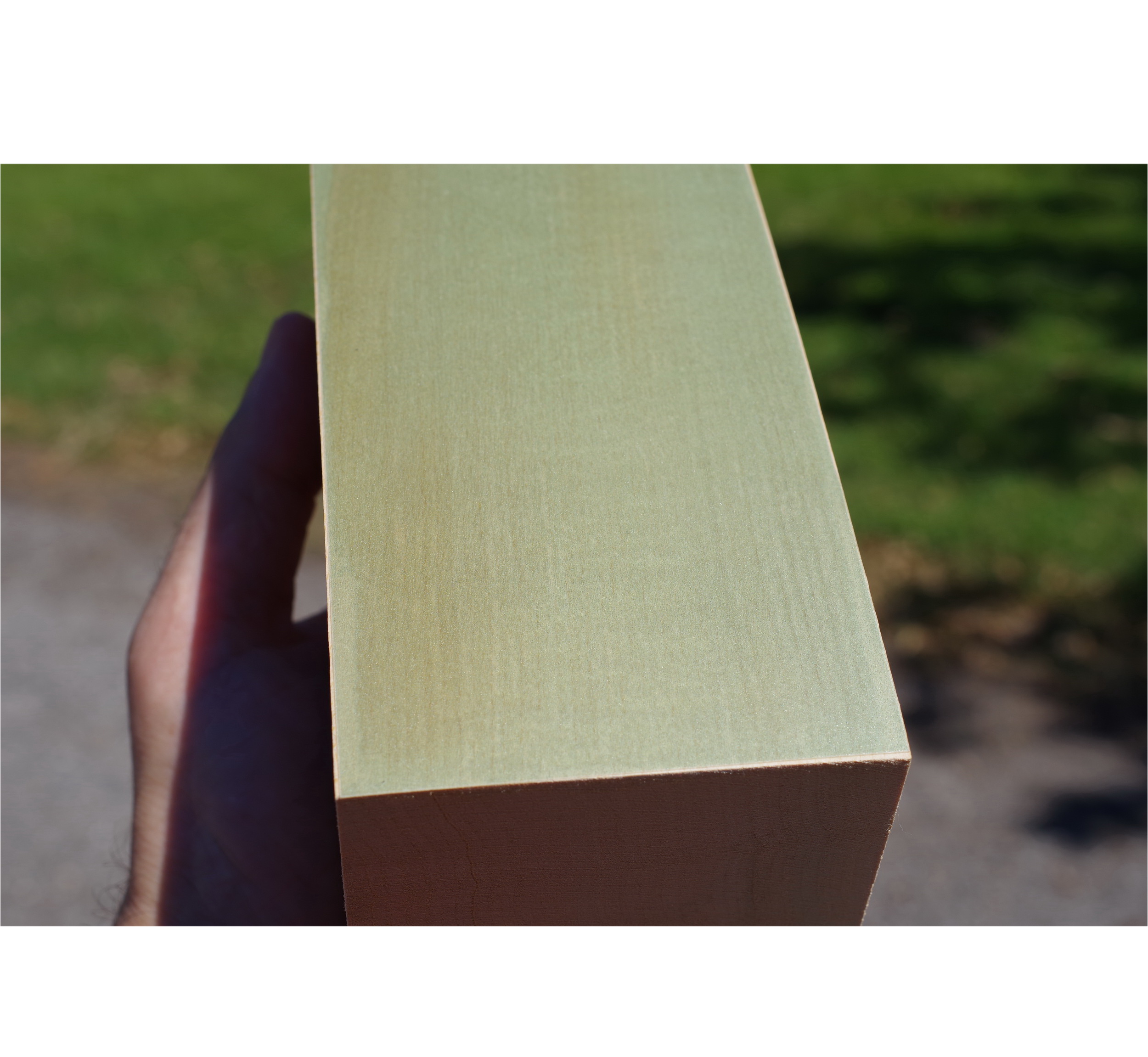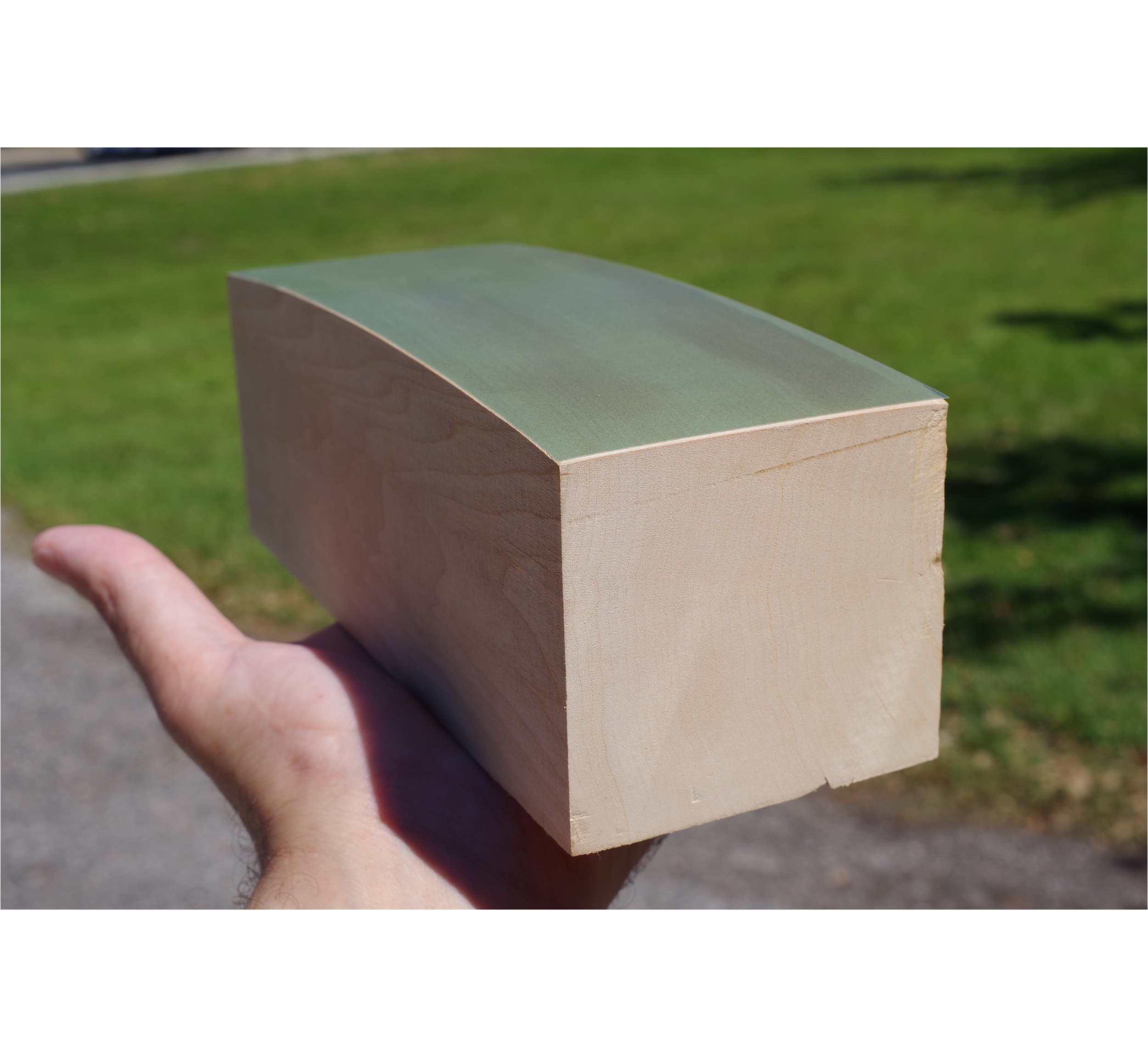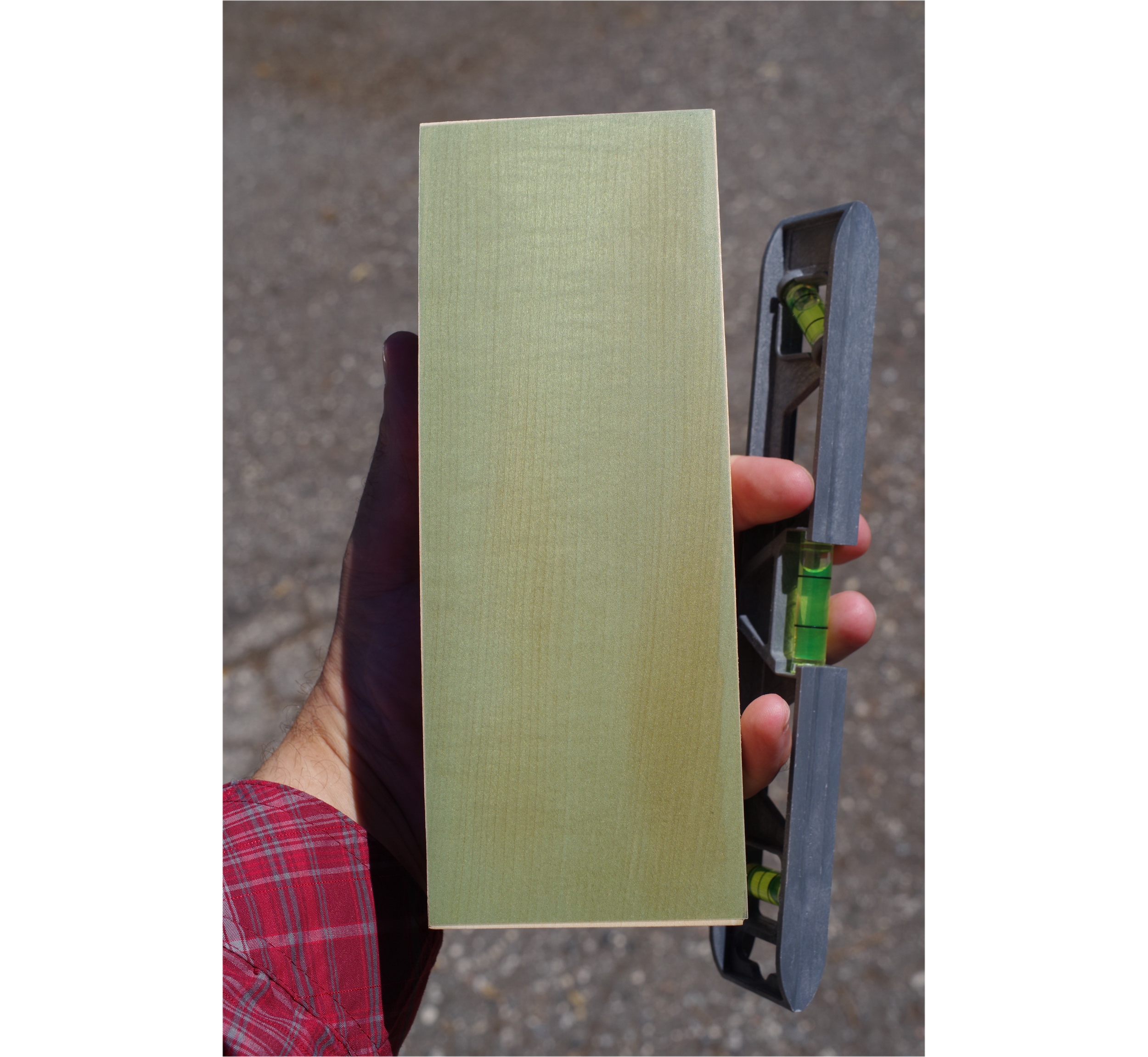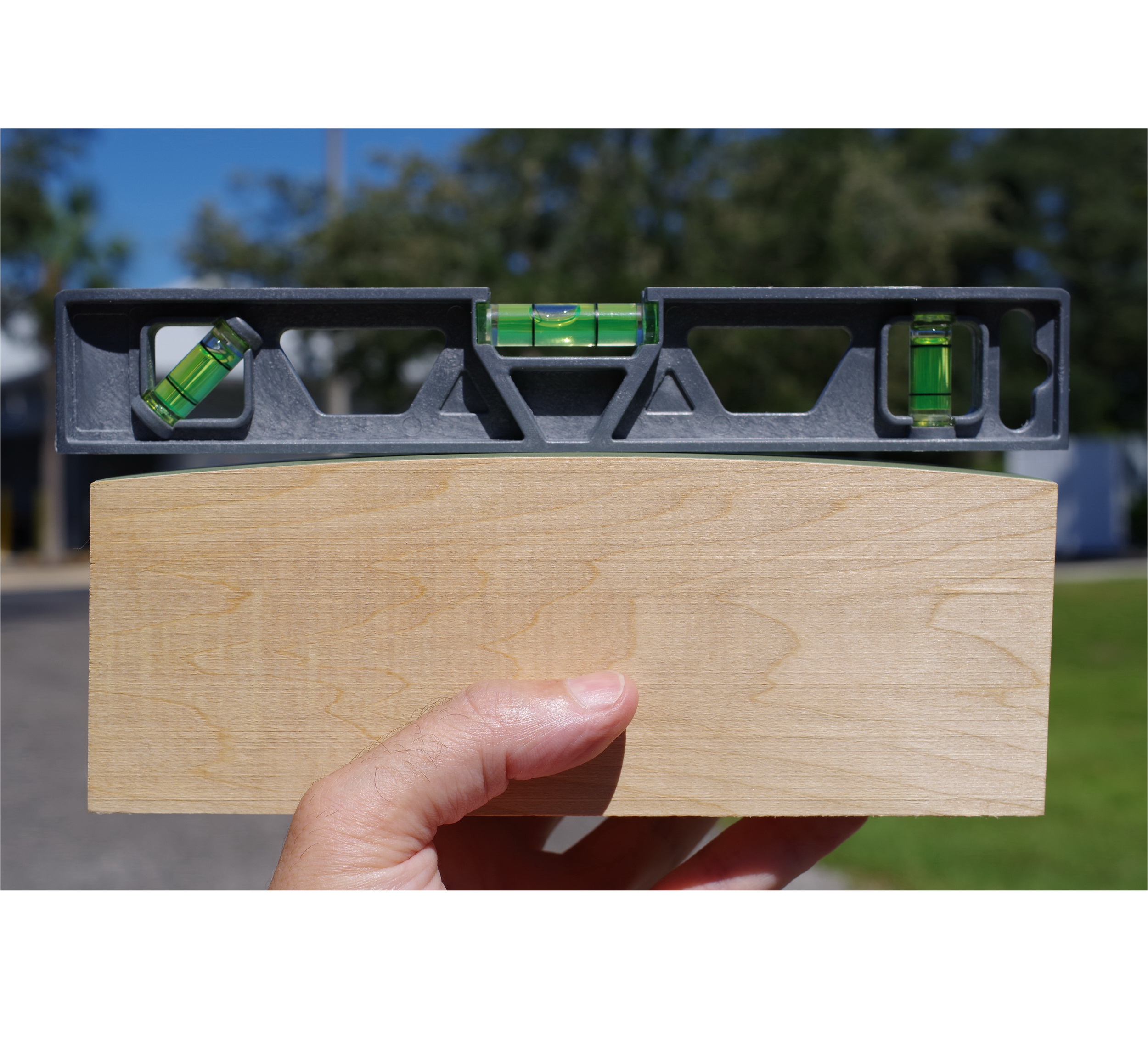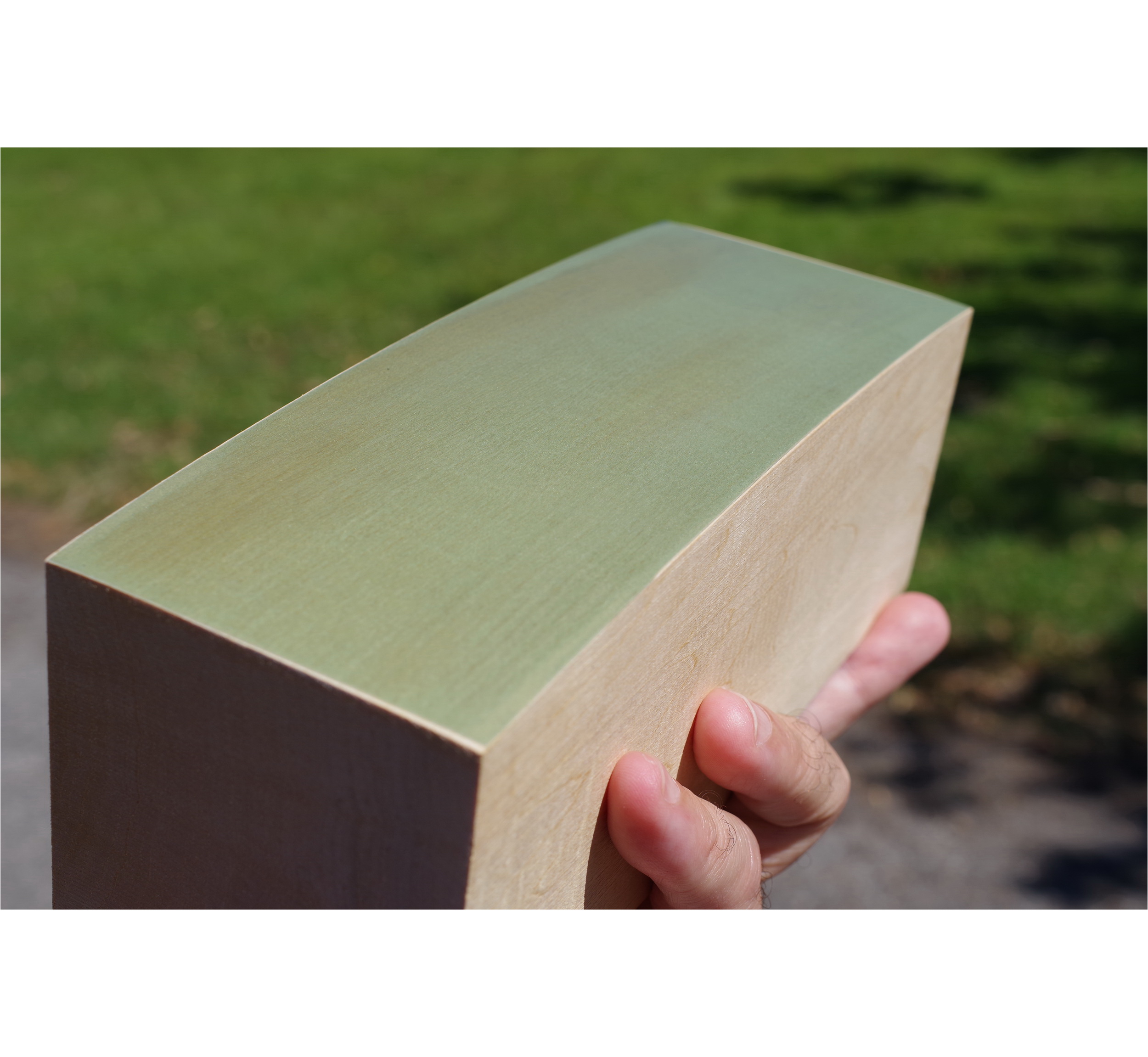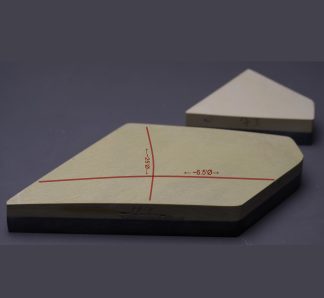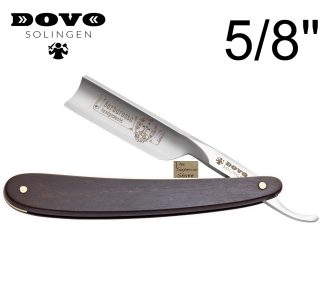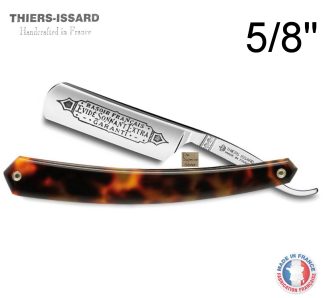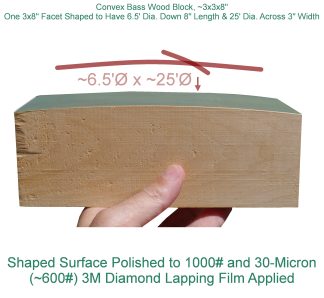Description
This is a tremendously envious chunk of wood, that much I can tell you. I’ll have to make some more of them as time allows, and being as it is such an covetous tool, perhaps I’ll put even more labor in to it and flatten out and polish up the other three large facets (which on this piece were left as-supplied by the upper northwestern timber workers). That would, obviously, mean that the block should cost more. It wouldn’t work any better than this, but it would be prettier.
Anyway, this ~3x3x8″ block of dense bass wood was produced in Minnesota, USA, quite well dried as the raw wood before being finished in to a 3x3x8″ carving block, and then upon arriving here in Jax Bch FL has had one of its four ~3×8″ surfaces shaped with “the Jarrod plate” and an extensive selection of sandpapers to finally have a 6.5’Ø down the ~8″ length, and a ~25’Ø across the 3″ width.
The block has within it invested over $25 of abrasives and over two hours’ labor shaping this damn firm wood (it weighs 592g!), ~0.7x & ~$11 of which was the buffing out of 1000# diamond lapping film over and over on the grooves of this wood until the surface begged to get a pressure sensitive adhesive film applied to it. That took amazingly long, and those 3M diamond sheets sure are fine fine fine, but they don’t put up a fight for very long, probably should’ve used three sheets to be honest.
After all that work was done, the shaped surface was doused in isopropyl alcohol and had a 30-micron (~600#) 3M diamond lapping film 3×8″ sheet applied to it. The block took the sheet incredibly well and sticky, being as the surface of the wood was so well prepared and the ellipsoid shape the film is to follow so accurate. When this 3M film’s done, just peel it off, clean up any residue with isopropyl alcohol, and put another one on!
This device, used with honing oil, will be an incredibly fast tool for cutting in a concave bevel upon straight razors and other fine cutting tools, dare I say the fastest such device on this Earth beyond those “platen” spinning barely-convex discs that the Germans use in all the videos.
30-micron is just a bit to the too-rough side for razors that are already equipped with a concave bevel, but for a razor that’s had time on flat stones, maybe an eBay special with some pitting/chips/etc. at the apex, you would be very hard pressed to find a faster implement for creating the concave profile best suited to a bevel on a razor. It will quickly overtake the incumbent bevel!
It leaves behind slight micro-chipping which is easily removed in successive steps. The Germans would call that ‘micro-teeth’; I don’t know why they espouse this, but to a man (and one woman), every master grinder I spoke to via translation (about ten) said they wish to establish ‘micro-teeth’ on the bevel in the initial setting in of a cutting edge and then alter, but not remove, them later in finer steps. Honestly, I’ve tried zero-teeth and slightly-toothy edges many times, I suppose the toothy one does grab on to hair better but I think a completely toothless edge can shave well, too. I’m not about to tell the Germans what to do!
I’d use the block on the table and put the razor on the block of wood in the stropping direction, personally, and then await until I felt the burr (a foil edge of thin steel hanging directly in opposition to or on the side of the bevel you’ve created) before moving on to other hones with finer grits and perhaps longer effective diameters than the 6.5’Ø principal shape of this tool.
You can, of course, use the hone in the normal direction of a razor edge-leading, but just be careful you’ve given sufficient lubrication to the entire 3×8″ surface. As I have said, many times, work is FAST with these 30-micron things, even with the little 1×4″ blocks I’ve created, so as this is offering 6x more real estate for your usage, it will be exponentially faster. Use very little pressure on the razor.

